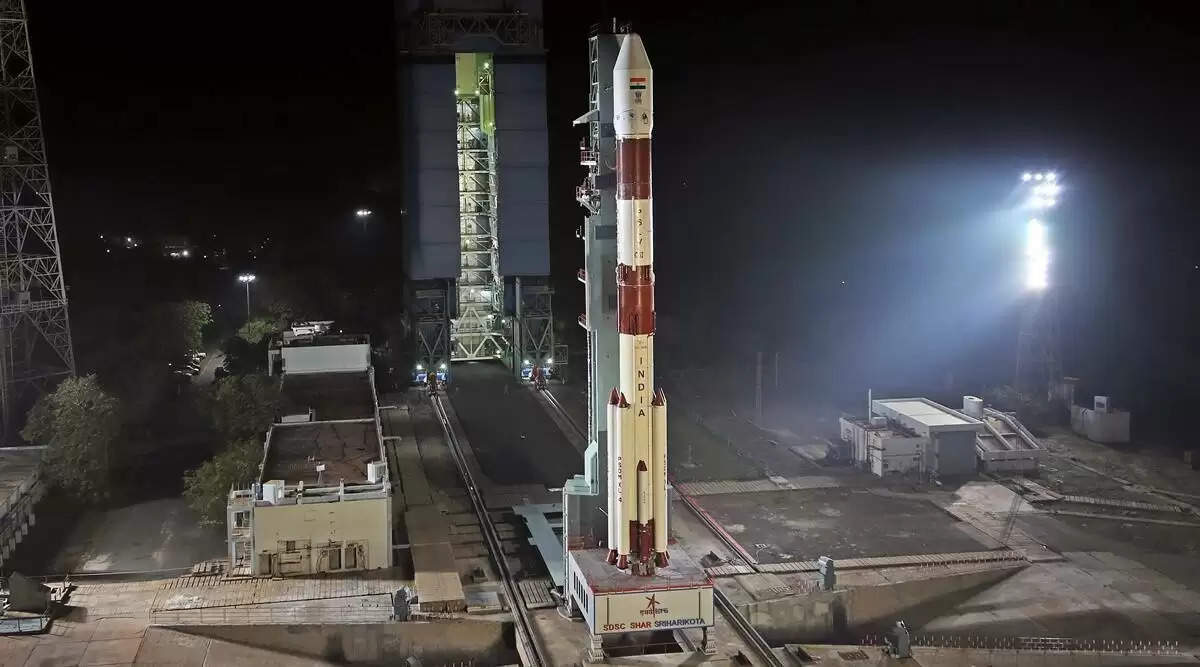Isro launched EOS-04 and two additional satellites successfully on Monday morning.

At 5:59 a.m. Monday, the Indian Space Research Organisation (Isro) launched its earth observation satellite EOS-4, as well as two co-passenger technology demonstrators and scientific spacecraft, from the country's only spaceport in Sriharikota, Andhra Pradesh.
"Three satellites, EOS-04, INSPIREsat-1, and INST-2TD, were successfully injected into a sun-synchronous polar orbit of 529 km after a flight of around 17 minutes 34 seconds." The satellites' orbits were "very near to the targeted orbits," according to a statement from the space agency.
Following separation, EOS-04's two solar arrays were autonomously deployed, and the Isro Telemetry Tracking and Command Network (ISTRAC) in Bengaluru took control. In a few days, the satellite will be maneuvered to its final location and begin transmitting data.
This was the country's first mission of the year, and the country's first mission since the GSLV F10 mission failed in August 2021. Because of the coronavirus epidemic, the PSLV-C52/EOS-04 mission has already been postponed twice. The launch was originally scheduled for the third quarter of 2021, however, it was moved back to the fourth quarter and then to early 2022.
This was the space agency's first mission under the leadership of S Somanath, who took over as chairman of Isro and secretary of the Department of Space in January. The chairperson congratulated his teams and stated that the satellite was a valuable asset to the country in a brief statement. "We shall be back with the next launch of PSLV very soon," said S Somanath, who spoke for less than a minute. "Until then, bye."
The EOS-04 is a 1,700kg radar imaging satellite that can provide high-quality images in all weather conditions. It can collect photos for agriculture, forestry, flood mapping, soil moisture, and hydrology, among other applications. The satellite has a ten-year mission life.
In addition to mapping vegetation, the spacecraft will carry the INS-2DT technology demonstrator satellite, which has a thermal imaging sensor and can aid in the evaluation of land and ocean surface temperatures.
The Indian Institute of Space Science and Technology, the University of Colorado in the United States, Nanyang Technological University in Singapore, and National Central University in Taiwan collaborated on the third InspireSat-1 satellite. This spacecraft will examine ionosphere dynamics and the Sun's coronal heating process with two instruments.
As a result of the coronavirus pandemic, NASA pushed back not only its big-ticket missions but also ordinary launches. Through 2020 and 2021, Isro has only tried four missions, one of which failed. Aditya-L1, India's first solar mission, Chandrayaan-3, India's third lunar mission with merely the lander and rover, and the Gaganyaan mission's maiden uncrewed flight were all slated to launch in 2020, but were pushed back to 2021 and then further after the second wave of the pandemic.
In August, Isro is anticipated to go after Chandrayaan-3. The newly developed small satellite launch vehicle's initial development flight, which was scheduled for the second half of 2021, has also been postponed.
.png)